Recently, I received two questions on my Messenger and TikTok namely, “Hey Willy! What can I write on my Facebook blog?” and “Can I make money blogging?” Relax! This blog talks about what to write on your Facebook blog.
Creating content for a Facebook blog can be both exciting and rewarding, especially with the platform’s expansive audience.
Facebook blogs offer a unique opportunity to connect with readers, showcase expertise, and even generate income.
Whether you’re starting from scratch or looking to improve your existing blog, understanding what to write on your Facebook blog is key to achieving success.
How to Craft the Perfect Facebook Blog
Crafting a perfect Facebook blog begins with understanding your audience. Your readers’ interests, needs, and challenges should shape your content.
Start by defining a clear goal for each post. Are you educating, entertaining, or inspiring your audience? Clarity in purpose ensures that your blog is engaging and resonates with readers.
Next, focus on writing attention-grabbing headlines. A strong headline can make the difference between someone scrolling past or clicking to read more. It should be concise, descriptive, and emotionally appealing.
Additionally, make your opening paragraph compelling. Start with a question, an interesting fact, or a relatable anecdote to hook readers immediately.
Consistency is another essential factor. Create a posting schedule and stick to it. Regular updates build trust and keep your audience engaged.
Furthermore, keep your writing conversational and relatable. Facebook’s casual atmosphere thrives on authenticity, so let your personality shine through in your posts.
Features of a Perfect Facebook Blog (What a Perfect Facebook Blog Looks Like)
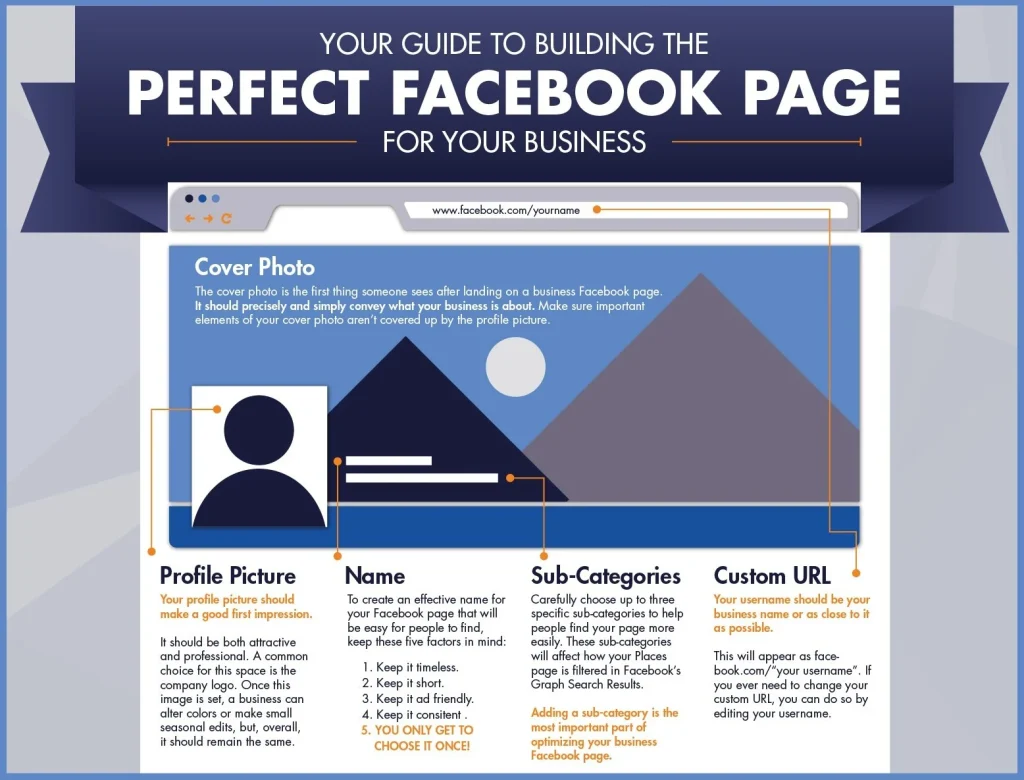
A perfect Facebook blog is visually appealing, easy to read, and highly engaging. Use short paragraphs and bullet points to enhance readability.
Adding relevant hashtags can increase discoverability and connect your content with trending topics or communities.
High-quality visuals are an integral feature. Whether it’s photos, graphics, or videos, visuals make your posts more attractive and help convey your message effectively.
Integrating user-generated content, such as testimonials or shared experiences, also adds authenticity and credibility to your blog.
Interactive elements like polls, questions, and live sessions further elevate your Facebook blog. Engaging directly with your audience fosters a sense of community.
Lastly, always include a clear call-to-action (CTA). Whether it’s asking readers to comment, share, or visit a link, CTAs guide readers on what to do next.
Related: Is Blogging Still Profitable?
10 Pillars of Facebook Blogging
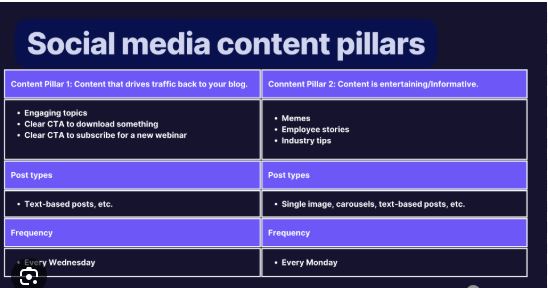
Facebook blogging is a powerful way to connect with your audience, share valuable insights, and grow your online presence.
To stand out in a crowded space, it’s essential to focus on the key elements that drive engagement, build trust, and foster community.
These foundational pillars form the backbone of effective Facebook blogging, ensuring consistent growth and meaningful interactions with your followers.
Let’s explore the ten pillars that can elevate your Facebook blogging strategy to new heights.
1. Content Strategy
A well-defined content strategy is the cornerstone of successful Facebook blogging. It involves planning and creating posts tailored to your target audience, focusing on value-driven content such as how-tos, inspirational stories, or niche expertise.
For example, a food blogger might share weekly meal prep ideas, complete with recipes and shopping lists.
Consistency in posting and aligning content with audience interests ensures long-term engagement.
2. Engaging Visuals
Posts with high-quality images, videos, or infographics capture attention quickly on Facebook’s feed.
Vibrant, visually appealing content increases shares and comments, boosting reach. For instance, a travel blogger could use drone footage or carousel posts featuring top destinations to engage followers.
3. Storytelling
Storytelling humanizes your brand and creates emotional connections. Sharing relatable or inspirational personal experiences makes your posts memorable.
A fitness blogger might narrate their journey of overcoming challenges to achieve health goals, resonating with followers facing similar struggles.
4. Authentic Engagement
Authentic interaction builds trust and loyalty. Responding to comments, participating in discussions, and acknowledging follower contributions create a sense of community.
For example, a tech blogger might answer follower questions about gadgets or software updates, reinforcing their credibility.
5. Call-to-Action (CTA)
Including clear CTAs encourages followers to take desired actions, such as reading a blog post, commenting, or sharing.
A parenting blogger could write, “What’s your favorite way to keep kids entertained on a rainy day? Share below!” prompting engagement while staying relevant.
6. Leveraging Facebook Groups

Joining or creating niche Facebook groups fosters direct interaction with a like-minded audience.
Sharing expertise or starting discussions in these groups can drive traffic to your blog.
A gardening blogger could contribute tips to a plant care group, establishing themselves as an authority.
7. Data-Driven Insights
Using Facebook Insights, bloggers can analyze post-performance, audience demographics, and peak engagement times.
This data helps refine strategies, such as adjusting posting schedules or tailoring content themes.
For instance, an entrepreneur blogger might notice that posts on productivity tips perform better on weekday mornings.
8. Cross-Promotion
Cross-promoting content on other social media platforms or linking blog posts to Facebook drives traffic.
Collaborations with fellow bloggers or influencers also expand reach.
For example, a beauty blogger might share makeup tutorials on Instagram and invite followers to read detailed reviews on Facebook.
9. Monetization Opportunities
Exploring monetization options such as sponsored posts, affiliate marketing, or Facebook’s in-stream ads can transform blogging into a revenue stream.
A lifestyle blogger might partner with home décor brands to feature their products in themed posts.
10. Consistent Branding
A cohesive tone, style, and branding across posts make your Facebook blog recognizable and trustworthy.
From using consistent colors in visuals to maintaining a conversational tone, branding leaves a lasting impression.
A book blogger, for instance, might use a signature graphic design template for book reviews.
How to Optimize Visuals on Facebook Blogs

Visuals play a crucial role in capturing attention and driving engagement on Facebook blogs.
Optimizing your visuals ensures they resonate with your audience, enhance the storytelling experience, and boost overall performance.
Here’s how to make your visuals impactful and professional:
Use High-Quality Images and Videos
Ensure all visuals are crisp, well-lit, and professionally composed. Grainy or low-resolution content can harm your credibility.
For instance, if you’re a food blogger, use a DSLR or high-quality smartphone camera to capture vibrant images of your dishes.
Apps like Lightroom or Canva can help refine these visuals further.
Optimize for Facebook Dimensions
Facebook favors specific image and video dimensions for optimal display. For posts, use 1200 x 630 pixels, and for videos, adhere to a 4:5 or 16:9 ratio.
Using these dimensions ensures your visuals look polished and professional, avoiding awkward cropping or pixelation.
Incorporate Branding
Add subtle branding elements, such as logos, watermarks, or consistent color palettes, to your visuals.
For instance, a travel blogger could overlay their blog name or logo on photos of scenic landscapes, reinforcing brand recognition while protecting content from unauthorized use.
Leverage Video Content
Videos are among the most engaging types of content on Facebook. Create short, compelling videos that convey your message within the first few seconds.
For example, a DIY blogger might showcase quick tutorials for crafting, using captions to make the content accessible to viewers watching without sound.
Utilize Facebook’s Visual Tools
Facebook offers features like carousel posts and slideshows to create dynamic visual content.
A fitness blogger, for instance, could use carousel posts to showcase step-by-step workout routines, while a slideshow might highlight transformations or progress stories.
Caption Your Visuals
Adding captions or text overlays makes your visuals informative and appealing.
For example, a fashion blogger might include outfit details, prices, or styling tips on photos of their looks, giving followers immediate value.
Prioritize Mobile Optimization
Since most users browse Facebook on mobile devices, ensure your visuals are mobile-friendly.
Test your posts on different devices to confirm that images and videos display correctly and maintain quality across platforms.
Add Variety to Visual Content
Avoid monotony by mixing up your visual content. Alternate between photos, videos, infographics, GIFs, and memes to keep your audience engaged.
For example, a gardening blogger could share plant care infographics one day and a time-lapse video of a blooming flower the next.
Use Eye-Catching Thumbnails
When sharing videos, select a captivating thumbnail to entice viewers to click.
For instance, a cooking blogger might choose an image of a fully prepared dish as the thumbnail for their recipe tutorial video.
Test and Analyze
Experiment with different types of visuals to understand what resonates most with your audience.
Use Facebook Insights to track metrics like reach, engagement, and shares.
For example, if you notice that posts with candid behind-the-scenes photos perform better, prioritize creating similar content.
How to Share Facebook Blog on Other Social Media Platforms
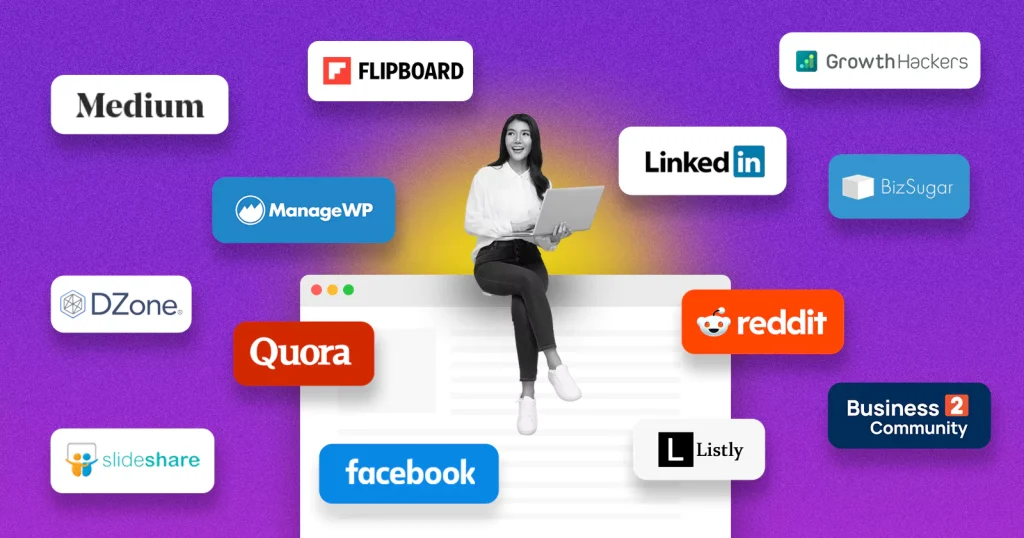
Cross-promoting your Facebook blog on other platforms increases its reach and visibility. Start by identifying where your audience spends time.
For instance, if your readers are active on Instagram, create a visually engaging post or story that links back to your Facebook blog.
Leverage platforms like Twitter to share concise snippets or highlights from your blog with a link to the full post.
On LinkedIn, tailor your blog’s messaging to appeal to a professional audience, emphasizing educational or industry-relevant content.
You can also repurpose your blog’s content into short videos or infographics for TikTok or Pinterest.
Consistency in branding and messaging across platforms ensures that your audience recognizes your content, regardless of where they find it.
Regularly analyze your cross-platform efforts to see what works best and adjust your strategy accordingly.
How to Monetize Facebook Blog
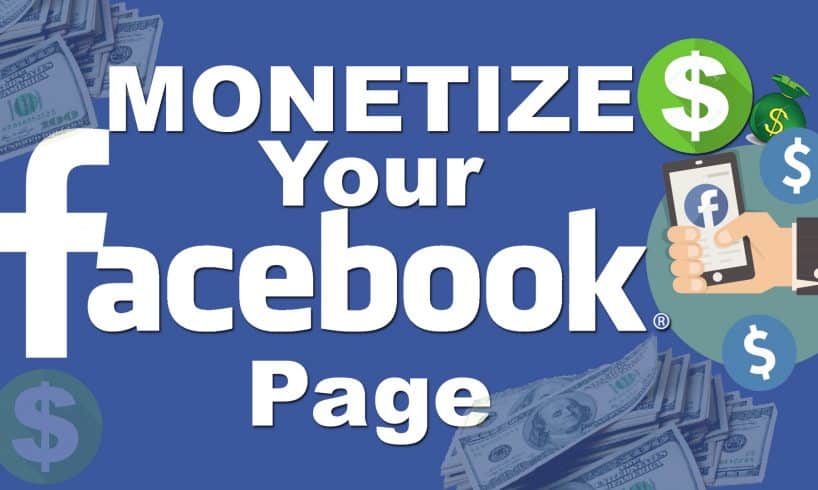
Monetizing your Facebook blog can transform your passion for content creation into a sustainable income source.
With the right strategies and tools, you can leverage Facebook’s vast audience and platform features to generate revenue effectively. Here’s a detailed guide:
Leverage Sponsored Posts
Collaborate with brands to create sponsored content tailored to your audience. These posts often include a product or service endorsement, which aligns with your blog’s niche.
For example, a fitness blogger could partner with a protein powder company to share workout tips featuring their product.
Ensure all sponsored content complies with Facebook’s advertising policies and includes the required #ad or #sponsored disclosure.
Utilize Facebook’s Ad Breaks
If you create video content, Facebook’s Ad Breaks allow you to earn money by including ads in your videos.
Eligible videos must be at least one minute long, with ads placed at natural breaks.
A tech blogger might use this feature in gadget reviews or tutorials to earn passive income while providing value.
Join Facebook’s Subscription Program
Facebook’s Fan Subscriptions allow followers to pay a monthly fee in exchange for exclusive content.
This model works well for bloggers who can offer premium content, such as behind-the-scenes access, Q&A sessions, or early access to new posts.
For instance, a travel blogger could share exclusive itineraries and tips with their subscribers.
Promote Affiliate Products
Affiliate marketing involves promoting products or services and earning a commission for each sale made through your referral link.
Choose affiliate products that resonate with your niche and audience. For example, a beauty blogger might share makeup tutorials and include affiliate links to the featured products.
Sell Your Products or Services
Use your Facebook blog to promote and sell your offerings, such as eBooks, courses, merchandise, or consulting services.
A gardening blogger could create and sell a digital guide on indoor plant care or offer personalized advice for landscaping projects.
Create Paid Events or Workshops
Facebook’s Events feature allows you to organize paid virtual or in-person workshops
A cooking blogger, for instance, could host a live cooking class where participants pay to learn new recipes and techniques.
Partner with Facebook’s Instant Articles
Instant Articles enable bloggers to monetize their content through ads placed within the articles.
This feature ensures faster loading times and a seamless reading experience, increasing the likelihood of higher ad revenue.
A news or education blogger could use Instant Articles to monetize their informative posts.
Use Crowdfunding Platforms
Integrate crowdfunding links, such as Patreon or Ko-fi, into your Facebook blog.
Loyal followers can support your work financially in exchange for perks like exclusive content or personalized shoutouts
For example, an artist blogger could offer commissioned artwork to supporters.
Enable In-Stream Commerce
If your blog involves selling physical products, consider using Facebook Shops to showcase your inventory
Followers can browse and purchase items directly through your page. For example, a lifestyle blogger could sell handmade home décor items through this feature.
Collaborate with Influencers or Co-Creators
Joint ventures with influencers or creators in your niche can increase your reach and revenue potential. For example, a parenting blogger might collaborate with a child development expert to create and sell an online parenting course
Challenges of Blogging on Social Media
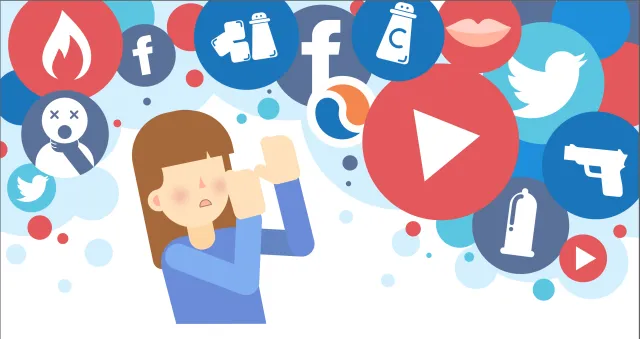
Blogging on social media offers incredible opportunities to reach a large audience, but it also comes with its own set of challenges.
Here are some key obstacles bloggers often face and how they can impact growth and engagement:
Algorithm Changes
Social media algorithms determine the visibility of your content. Frequent changes to these algorithms can drastically reduce reach, making it harder for your posts to gain traction.
For example, a lifestyle blogger might notice a sharp decline in engagement when Facebook prioritizes posts from friends and family over pages.
Staying updated on algorithm trends and diversifying content strategies can help mitigate this challenge.
Oversaturation and Competition
The sheer volume of content on social media makes it challenging to stand out.
With millions of bloggers in niches like fitness, travel, or beauty, it’s easy for posts to get lost in the noise.
For instance, a travel blogger may struggle to compete against influencers with larger budgets for high-quality visuals and paid promotions.
To overcome this, focus on authenticity and building a loyal, niche-specific audience.
Time-Consuming Nature
Maintaining a consistent posting schedule, engaging with followers, and creating high-quality content requires significant time and effort.
A small business blogger, for example, might feel overwhelmed managing their blog while running their business.
Scheduling tools like Buffer or Hootsuite and outsourcing tasks can help save time.
Negative Comments and Trolls
Social media’s open nature exposes bloggers to criticism and trolling, which can be emotionally draining.
A food blogger might face backlash over a controversial recipe or cooking technique.
Developing a thick skin and setting moderation rules for comments can help handle negativity effectively.
Dependence on Platform Policies
Social media platforms often implement strict guidelines and policies that bloggers must adhere to, such as content restrictions or ad policies.
Violating these rules, even unintentionally, can lead to penalties or account bans.
For instance, a health blogger sharing dietary advice might face restrictions if their content is flagged as misleading.
Thoroughly understanding platform policies and keeping content compliant is essential.
Lack of Ownership
Unlike a personal website or blog, social media platforms own the audience data, and bloggers risk losing their followers if the platform shuts down or changes its policies.
A beauty blogger with thousands of followers on Facebook could face a significant setback if their account gets suspended.
Building an email list alongside a social media presence is a smart way to retain control over your audience.
Monetization Challenges
Monetizing a social media blog can be difficult without a large, engaged audience. For example, a fitness blogger may struggle to secure brand deals or ad revenue without consistent and high engagement rates.
Exploring multiple revenue streams, such as affiliate marketing or offering paid services, can alleviate this issue.
Burnout and Creativity Block
The pressure to post frequently and consistently can lead to burnout or a lack of creative ideas.
A parenting blogger, for example, might find it challenging to continuously produce fresh content while managing family responsibilities.
Taking breaks and planning content in advance can help maintain balance.
Platform-Specific Constraints
Each platform has its limitations, such as character limits, format restrictions, or content preferences
For instance, a tech blogger might find it challenging to explain complex concepts within Facebook’s post character limits.
Repurposing content for different platforms can address such constraints.
Measuring ROI
Tracking the success of a social media blog can be challenging, especially if your goals are not clearly defined
For example, a gardening blogger might find it difficult to quantify the impact of engagement or traffic on their business growth.
Using analytics tools like Facebook Insights or Google Analytics can help measure ROI and refine strategies.
FAQs on What to Write on Your Facebook Blog
Q: How do I create a blog page on FB?
A: Go to the Pages section and click on “Create New Page.” Fill in the required details, such as your page name, category, and description. Customize your page with a profile picture, cover photo, and additional information before publishing it.
Q: Is it free to blog on Facebook?
A: Yes, it is entirely free to create and maintain a blog on Facebook. However, optional features like advertising or premium tools for enhancing your blog’s visibility may incur costs.
Q: Do Facebook bloggers make money?
A: Many Facebook bloggers earn money through sponsored posts, affiliate marketing, in-app monetization, and selling products or services. The key is building an engaged audience that attracts brands and opportunities.
Q: What is a personal blog on Facebook?
A: A personal blog on Facebook is typically an individual’s page or profile, dedicated to sharing personal insights, experiences, and expertise. It’s often used as a platform for self-expression, networking, or professional branding.
To Sum Up
Understanding what to write on your Facebook blog is the first step toward creating meaningful and impactful content.
You can maximize your blog’s reach and effectiveness by crafting engaging posts, optimizing visuals, and leveraging cross-platform promotion.
Monetization opportunities and addressing challenges head-on will further enhance your blogging journey. Start your Facebook blog today and connect with a world of possibilities!











